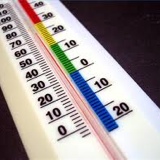Information
-
Property Reference
-
Date
Property details
-
Location.
-
First line of the Address.
-
Customer Name:
-
Tenure.
- Owner occupier
- Local Authority
- Housing Association
- Privately Rented
-
Contact Details.
-
House Type.
-
Property Type
-
Number of Bedrooms.
-
Construction age of the property.
-
Survey conducted by.
-
Main Heating type, please take photos of the appliance and the rating plate or appliance ID.
-
Location of the flue.
- Internal
- External
- Front Elevation
- Rear Elevation
- Left Hand Elevation
- Right Hand Elevation
- Does the flue pass thought the loft space
- None
-
Secondary heating.
- Gas Fire with Flue
- Gas Fire with chimney
- Gas Fire Flush Fitted
- Open Fire with internal chimney
- Open Fire with external chimney
- Wood Burner
- No other heating present
-
If secondary heating present please take a photo.
-
Structural Condition of the roof.
- Very good
- Good
- Poor
- Very poor
-
External Condition of the building.
- Very good
- Good
- Poor
- Very poor
-
Remedial Works Required.
- Yes
- No
- N/A
-
If yes please give details of remedial work required plus photos.
-
Have you done an internal inspection of the building.
- Yes
- No
- N/A
-
If you have answered yes please select the best description of your findings.
- Damage to ceiling
- Water stain on ceiling
- Low level damp near the skirting boards
- Black mould in the corners of the rooms
- Black mould on the ceiling and the walls
- Condensation on the windows and external walls
- No internal issues that I can see.
-
Please take photos of your internal findings.
-
Safety monitors present.
- Smoke Alarm
- Fire Alarm
- CO2 Alarm
-
Have the alarms all been tested by surveyor.
-
Protected species or rodents present in building.
-
Special Instructions.
Access
-
On site parking.
-
Client Instructions.
-
Access Issues.
-
Access Equipment Required.
- None
- Ladders
- Scaffold Board for Flat Roof
- Scaffolding
- Conservatory Ladder
- Roof Ladder
RIR
-
Is the property suitable for RIR Insulation?
-
Provide details and reasoning why
-
Provide photographic evidence to support your reasoning
-
Is 100% of the measure able to be installed?
-
Is the omitted area(s) already insulated
-
Why cant these areas be insualted
-
What insualtion is fitted to these areas and is it compliant with current building regs and PAS 2035?
Room in Roof Type as per Stroma RdSAP guide
-
Please circle type by annotating the picture
-
Room is accessed by a permanent fixed staircase
Photographs
-
Take photographs of the following. When submitting they must be clearly dated and labelled and will form part of photo packs as shown.
If you are unable to take a photo – e.g. no access to side of property – please provide photos to evidence the reason -
Plan drawing
File Name EPOP
-
Property Type (showing detachment). Include Front elevation, Rear Elevation, Side elevations and Roof Line
-
DPC
-
Wide angle of each bedroom
File name PMHS
-
Main heating source
-
Gas/electric meter (if Oil photo of tank/bottles)
-
All flues, vents and heaters
File name PICP (All rooms to be labelled e.g Bedroom 1 slopes)
-
Fixed staircase
-
Evidence of common wall height less than 1.8m
-
Pre-install wide angle photos from inside the RID (if multiple rooms within RIR photos of all rooms must be provided)
-
Dormer windows (internal & external)
-
Gable walls
-
Party walls
-
Slopes
-
Bathroom/Shower room
-
Residual loft space
-
Stud walls
-
Flat ceiling
-
Mechanical vents
-
Existing hatches or new hatches to be installed locations
-
Live water tanks and pipes
-
High-ampere cables
-
Loft warning sign(s)
-
Detailed site plan (not to scale - draw each element that is to be insulated)
Annotate grid form for drawings if required
-
Add drawing
What RIR Elements are present
-
If any elements are not to be 100% insulated please provide supporting reason
- Party Wall
- Gable
- Residual
- Flat
- Stud
- Slope
- Dorma
- Other area that cannot be installed
-
Detail and reason and evidence for each element selected.
RIR Questions
-
Are there any water tanks and/or pipes present in the (unheated) loft space or residual loft space, that require insulating?
-
What insulation is required
-
Are there any tanks that require insulation
-
What type
-
Is a walkway required to access water tanks?
-
Mark all water tanks on site plan
PAS2030:2019 and specific Annex Information
-
Room in Roof Insulation will be installed in compliance with PAS2030:2019 and Annex B12 of this PAS.
Elements of Roof Room
-
RIR Floor Area m²
-
Annotate with measurements
-
Flat Ceiling area present at dwelling? (No end section)
-
Flat Ceiling insulation present? (new)
-
What is the thickness of insulation mm
-
Which type of insulation is present?
- Fibre (any fibre quilt or blown material)
- PRI board (to specification)
- Other
-
Describe material present (non compliant product)
-
Is the insulation to be removed (ventilation, wrong location, wrong product, has to be removed as part of renewal process)
-
Why?
-
What material is to be used
-
What is the area (m²)
-
Area to be treated
-
What thickness is to be installed (mm) (amend if modelling changes)
-
Sloping Ceiling area present at dwelling? (No end section)
-
Sloping Ceiling insulation present? (new)
-
What is the thickness of insulation mm
-
Which type of insulation is present?
- Fibre (any fibre quilt or blown material)
- PRI board (to specification)
- Other
-
Describe material present (non compliant product)
-
Is the insulation to be removed (ventilation, wrong location, wrong product, has to be removed as part of renewal process)
-
Why?
-
What material is to be used
-
What is the area (m²)
-
Area to be treated
-
What thickness is to be installed (mm) (amend if modelling changes)
-
Stud Wall / common walls insulation present? (New)
-
What is the thickness of insulation mm
-
Which type of insulation is present?
- Fibre (any fibre quilt or blown material)
- PRI board (to specification)
- Other
-
Describe material present (non compliant product)
-
Is the insulation to be removed (ventilation, wrong location, wrong product, has to be removed as part of renewal process)
-
Why?
-
Area to be treated
-
What thickness is to be installed (mm) (amend if modelling changes)
-
Common wall/stud construction material
- Plaster Stud
- Stone or Brick
- Mixture of stone/brick and plaster stud
-
What material is to be used
-
What is the area (m²)
-
Party Wall area present at dwelling? (No end section)
-
Does the Party Wall adjoin another dwelling heated RIR?
-
Is the party wall solid?
-
Party Wall insulation present? (new)
-
What is the thickness of insulation mm
-
Which type of insulation is present?
- Fibre (any fibre quilt or blown material)
- PRI board (to specification)
- Other
-
Describe material present (non compliant product)
-
Is the insulation to be removed (ventilation, wrong location, wrong product, has to be removed as part of renewal process)
-
Why?
-
What material is to be used
-
What is the area (m²)
-
Area to be treated
-
What thickness is to be installed (mm) (amend if modelling changes)
-
Gable End area present at dwelling? (No end section)
-
Gable End insulation present? (new)
-
What is the thickness of insulation mm
-
Which type of insulation is present?
- Fibre (any fibre quilt or blown material)
- PRI board (to specification)
- Other
-
Describe material present (non compliant product)
-
Is the insulation to be removed (ventilation, wrong location, wrong product, has to be removed as part of renewal process)
-
Why?
-
What material is to be used
-
What is the area (m²)
-
Area to be treated
-
What thickness is to be installed (mm) (amend if modelling changes)
-
Residual area present at dwelling? (No end section)
-
Residual area insulation present? (new)
-
What is the thickness of insulation mm
-
Which type of insulation is present?
- Fibre (any fibre quilt or blown material)
- PRI board (to specification)
- Other
-
Describe material present (non compliant product)
-
Is the insulation to be removed (ventilation, wrong location, wrong product, has to be removed as part of renewal process)
-
Why?
-
What material is to be used
-
What is the area (m²)
-
Area to be treated
-
What thickness is to be installed (mm) (amend if modelling changes)
Dormer Windows - repeat section as neccessary
-
Are there dormer windows
-
Anotate
-
Must they be insulated from above or below
All Elements
-
Detail below any areas that require thin insulation or alternative action
-
Any of the areas of the RIR require thinner insulation
-
Details here
Percentage of Measure Installed (POMI)
-
Is 100% of the RIR being installed
-
What is the reason for not achieving 100%
Drawing Section - Repeat as required
-
Annotate Drawing Form
Loft Insulation
Loft Insulation.
-
Is loft to be insulated.
- Yes loft requires topping up
- No Loft has sufficient insulation
- Unable to check due to the amount of tenants belongings.
-
Photo of loft and access point
-
Loft Hatch Size?
-
Area to be insulated.
-
Existing Depth.
- 0mm
- 12mm
- 25mm
- 50mm
- 70mm
- 80mm
- 100mm
- 125mm
- 150mm
- 170mm
- 200mm
- 250mm
- 270mm
- 300mm plus
-
Photo of existing depth.
-
Depth to be added.
- Existing over 250mm
- 100mm
- 150mm
- 170mm
- 200mm
- 250mm
- 270mm
- 300mm
-
Pipes and Tanks Present
-
Details of Pipes and Tanks to be insulated
-
Details of down lights, how many and there current location
-
Down lights present in ceiling?
-
Do they have halogen bulbs fitted.
-
Can you see the IP rating on the casing?
-
Please take a photo of the down light IP rating.
-
Are there any existing down light covers fitted?
-
If YES are they fire rated covers?
-
Electrical wiring free from visual defects?
-
Are there any high voltage cable's in the loft space.
-
If YES please select the type of cable in the loft space.
-
Loft Area.
-
In your opinion should loft be Rolled or Blown?
-
Does a steel combustion flue pass through the loft space?
-
Loft Height at Centre
- 0.80 metres
- 0.90 metres
- 1.00 metres
- 1.20 metres
- 1.40 metres
- 1.50 metres
- 1.60 metres
- 1.80 metres and above.
-
Relay Required
-
Loft hatch needing D/P
-
Loft vents required
-
Areas to be omitted
-
Does the loft have any boarding?
-
If YES can we insulate at lease 2/3 of the loft space?
-
Has the boarded area got insulation under it?
-
If not insulated under, are the joist tunnels tightly sealed with insulation at the ends?
- Yes
- No
- N/A
-
Walkway required
-
Details of walkway
-
Loft clearance
-
Details of loft clearance
-
Additional notes
If funding available please answer additional ventilation questions below.
-
If funding available please select YES.
-
Are there any visible signs of surface condensation or damp?
-
Does the property meet the minimum acceptable ventilation requirements set out in PAS 2035?
-
Does the cooker have a hood which ventilates to the outside?
-
Is there an airing cupboard or drying room that is ventilated to the outside?
-
Is there a tumble dryer which is vented to the outside of the property?
-
Do all wet rooms have as a minimum some from of passive or purge ventilation? (opening windows, air bricks or trickle vents)
-
Do all wet rooms have closing doors?
-
Is there a passive ventilation system?
-
Is there a mechanical ventilation system? (Continuous mechanical extract ventilation, Continuous mechanical ventilation with heat recovery)
-
Is there evidence of intermittent heating to parts of the property ?e.g TRV's being turned down too low to unused areas.
-
Are there appropriate controls in place to regulate the heating in the property?(thermostat, programmer etc)
-
Is the thermostat set to a minimum of 10 Celsius in all parts of the property that are heated?
-
Is there evidence of cloths being dried in the property?
-
Are there more bedrooms than occupants?
-
Is there single glazing at the property?
-
Has the importance of behaviour to moisture and condensation been explained to the occupants and left behind?
-
Is there a condensation calculation required? If so what elements?
Dynamic Risk Assessment & Client Declaration
Dynamic Risk Assessment.
-
Please select yes if loft insulation work as to be installed.
-
Reversing vehicle.
-
Asbestos
-
Overhead electricity cables.
-
Use of a step ladders.
-
Use of a ladder.
-
Manual Handling.
-
Hand tools.
-
Vibration.
-
Noise.
-
House keeping.
-
Use of mobile elevation working platform (mewp) or a scaffold tower.
-
Lone worker.
-
I have assessed the conditions on site ensuring there is adequate ventilation and no evidence of damp and no remedial works required. Unless listed below, there are no additional significant hazards observed that are not addressed in the generic risk assessment for the work to be undertaken.
-
Assessors signature
Installation checks to be completed by technician after the work as been completed.
-
Please select yes if loft insulation work as to be installed.
-
Crew leader name:
-
No 2 technician:
-
Date.
-
Crew leader signature.
-
Materials used:
-
Roll Matt 100mm
-
Roll Matt 150mm
-
Roll Matt 170mm
-
Roll Matt 200mm
-
Roll Matt 250mm
-
Roll Matt 270mm
-
Roll Matt 300mm
-
Pipe lagging 15mm
-
Pipe lagging 22mm
-
Pipe lagging 28mm
-
Pipe wrap per metre
-
Cold water tank jacket small
-
Cold water tank jacket medium
-
Cold water tank jacket large
-
Hot water tank jacket
-
Poly wedges installed
-
Customer signature:














